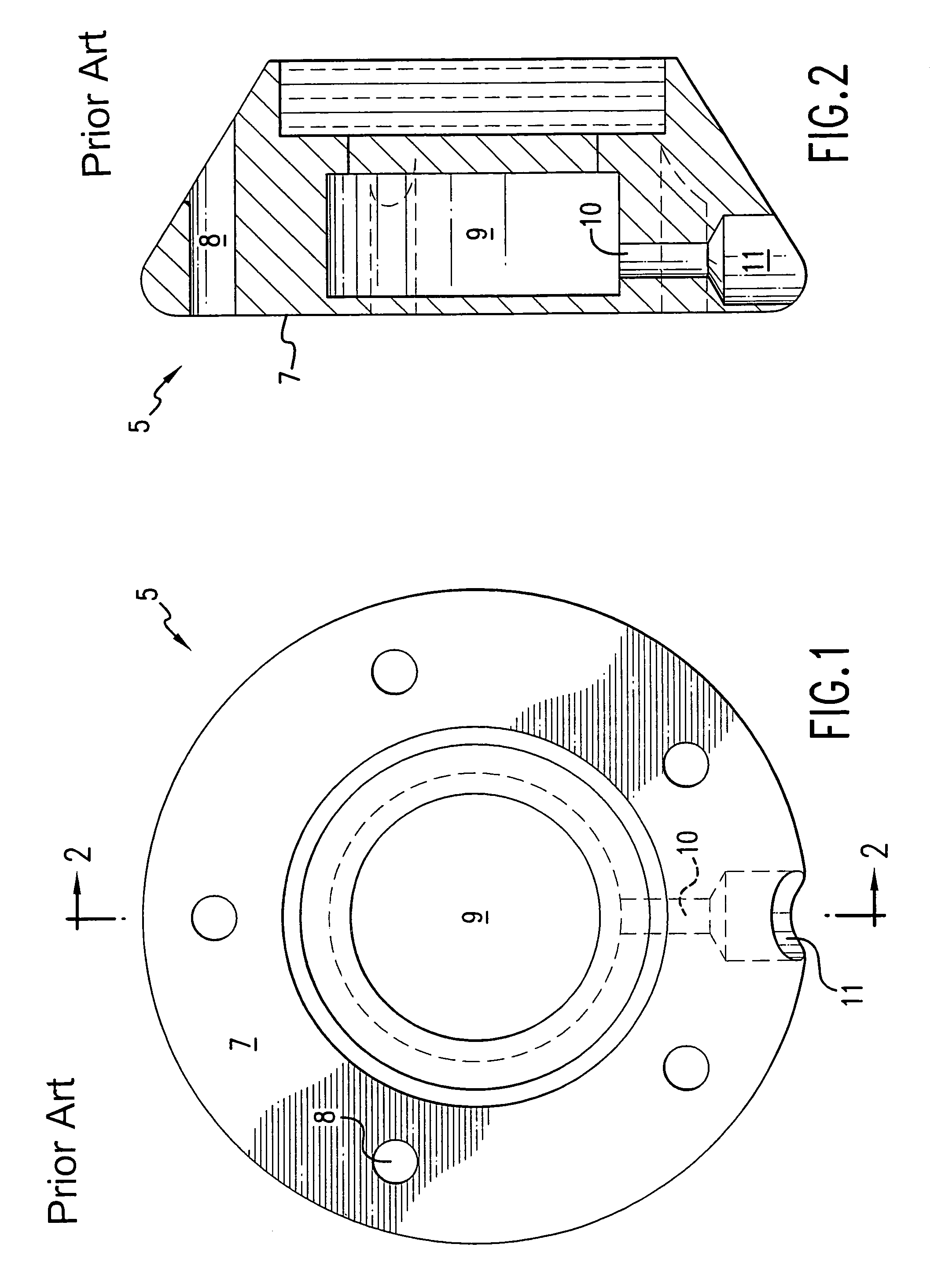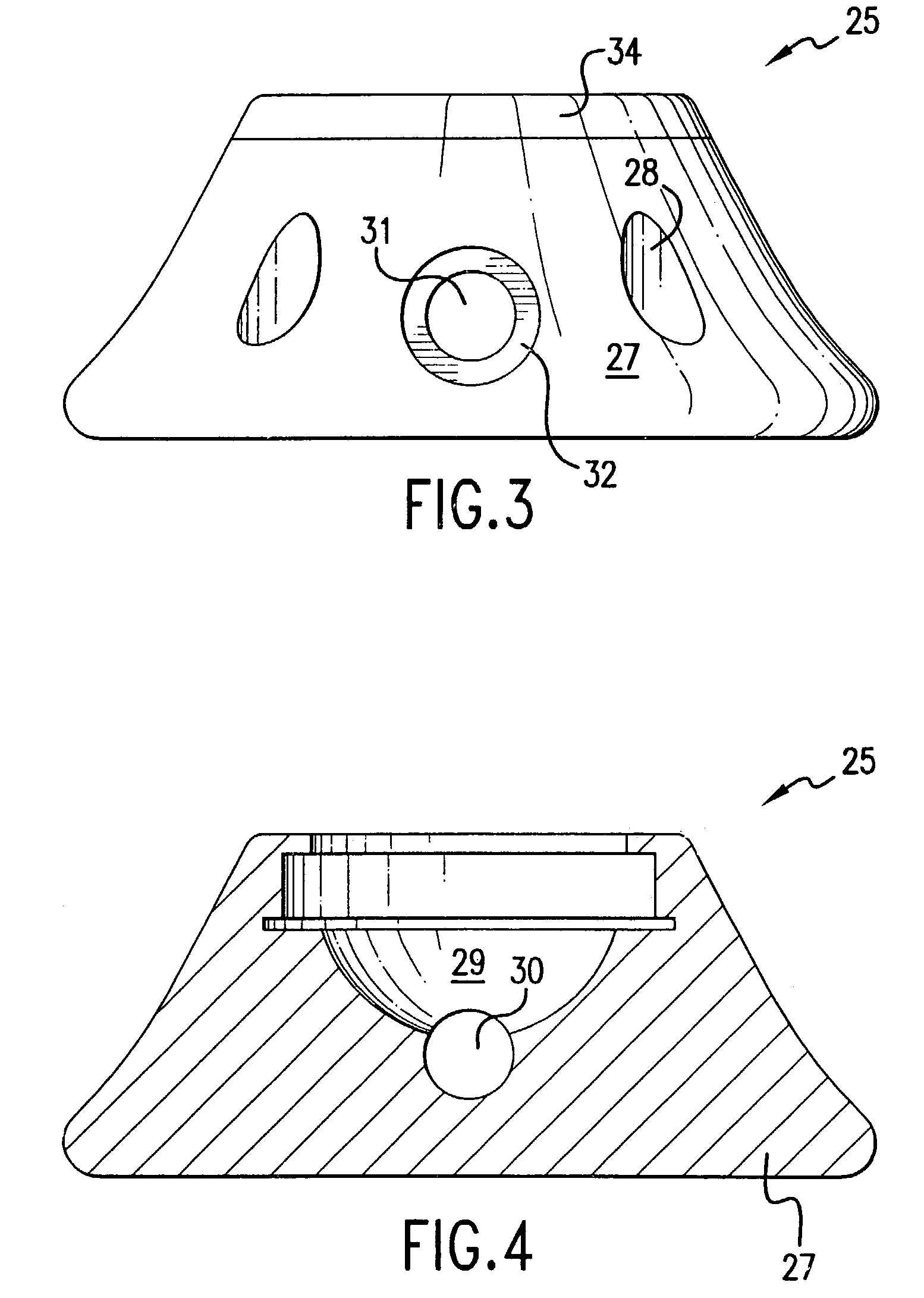Implantable access port
a technology of access ports and access ports, which is applied in the field of medical devices, can solve the problems of occlusion of the system by coagulated blood or other materials between uses, explantation of devices, and most patients that receive implantable access ports are either immune compromised, or are in danger of becoming immune compromised, so as to achieve effective reservoir cleaning and enhance the flow of material from the reservoir into the outlet and out of the access port.
- Summary
- Abstract
- Description
- Claims
- Application Information
AI Technical Summary
Benefits of technology
Problems solved by technology
Method used
Image
Examples
first embodiment
[0029]the implantable access port of this invention is illustrated in FIGS. 3 through 6. An implantable access port 25 is illustrated having a base 27 provided with a series of radially spaced suture holes 28, in known fashion. Here, however, in contrast to the known types of access ports, the access port 25 is formed to have a bowl-shaped reservoir 29, as best seen in FIGS. 4 and 6. The bowl-shaped reservoir is defined by a single smooth-surfaced wall which defines an open top of the reservoir, and a focus or center point at the “bottom” or center of the reservoir. The wall of the reservoir thus comprises a continuous curvilinear side wall.
[0030]The bowl-shaped reservoir, in all of the embodiments of the present invention, may thus be parabolic in shape, as well as hemispherical or semi-hemispherical when viewed in cross-section. The bowl-shaped formation of the reservoir in the base of the access port in such a manner thus allows for the reservoir to be made with the walls and the...
PUM
 Login to View More
Login to View More Abstract
Description
Claims
Application Information
 Login to View More
Login to View More - R&D
- Intellectual Property
- Life Sciences
- Materials
- Tech Scout
- Unparalleled Data Quality
- Higher Quality Content
- 60% Fewer Hallucinations
Browse by: Latest US Patents, China's latest patents, Technical Efficacy Thesaurus, Application Domain, Technology Topic, Popular Technical Reports.
© 2025 PatSnap. All rights reserved.Legal|Privacy policy|Modern Slavery Act Transparency Statement|Sitemap|About US| Contact US: help@patsnap.com



